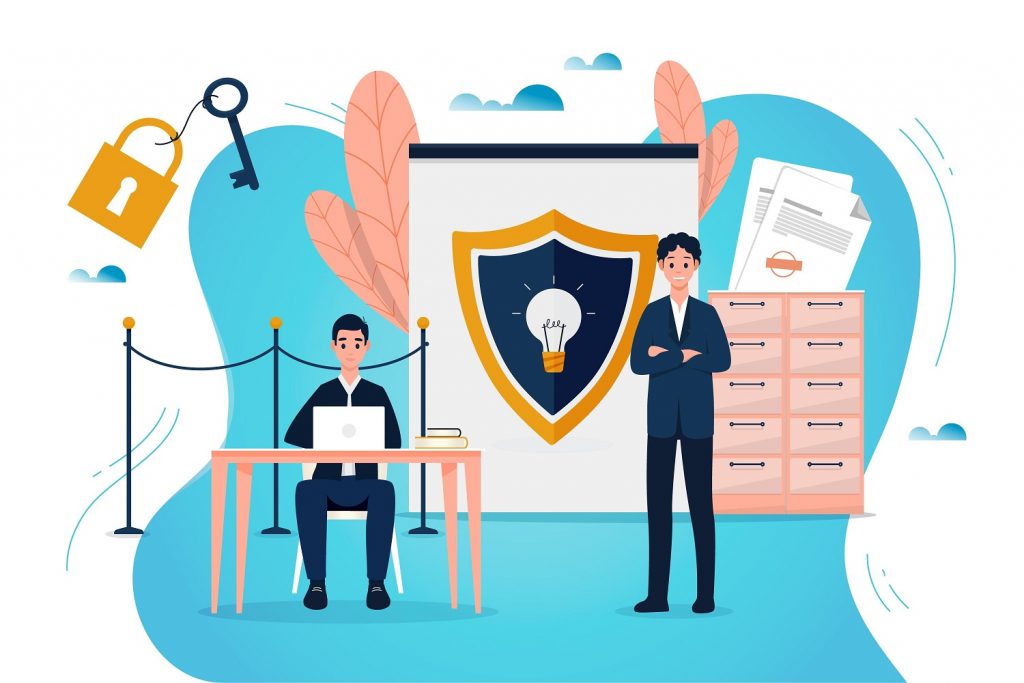Understanding IP Protection On Promotional Products In 2023

Most people think intellectual property (IP) rights apply only to product brandings. But that is not always the case, as many other situations, such as when running a sales or a brand awareness campaign, may require you to have your IPs on more than just your products and services.
When running promotions, you could want to have your IPs on T-shirts, mugs, caps, vehicles, and banners, among others. Promotional products are usable in many settings, including trade shows, direct mail campaigns, digital advertising, conferences, etc.
As a result, their use will directly impact a brand’s reputation and are worth protecting.
Understanding Intellectual Property
Intellectual properties are creations of the mind, such as literary work, designs, names, symbols, phrases, sounds, and images. In a business setting, intellectual properties distinguish one brand from the others in the market.
When used on promotional products, IPs can imply the authenticity of the products on offer. For example, if a sales representative is wearing a branded T-shirt or cap, their audience will more often than not assume that the products or services they are selling or promoting are authentic.
Sometimes unauthorized personnel may want to leverage your brand’s reputation to sell their products by using your IPs on their promotional products. Unfortunately, they may not care much about product or quality, which could negatively impact your reputation. Also, they will be eating into your market, affecting your profitability.
Applicable IP Protections for Promotional Products
There are many types of IPs registrable under Canadian and international IP laws. But not all IP protections apply to promotional products. The most applicable IPs are copyrights and trademarks.
Copyright Protection
Copyright protections apply for original works of art such as literary, musical, photographs, drawings, paintings, video, and other artistic works. Copyrights apply by default to the author of the artwork except under rare circumstances. However, registration makes the process of proving ownership much more straightforward.
Upon successful copyright registration, you get exclusive rights to the use of the copyrighted material. Better still, you have the right to stop others from using your work in their promotional products.
If the usage of your copyrighted material results in financial or reputational damage, you have the right to file a copyright infringement claim and recover damages. Copyright protections last for an author’s lifetime and 50 years after death. If the author is a business, the protections will last for 50 years from the publication date.
Trademark Protection
Trademarks are brand identifiers that help products stand out from their competition. Identifiers registrable as trademarks include logos, brand names, and slogans. When used on promotional products, brand names create an impression of the association between the promotional products and the brand.
The best way of ensuring that you have an exclusive right of use to your trademarks is by registering them as IP. This way, you will have the legal right to stop others from using them in their promotional products or file for an infringement lawsuit and recover damages.
The first step in registering your trademarks is conducting a comprehensive trademark search on the Canadian trademark database and also on other online portals to ensure that no business or individual is using a similar trademark. This process can be somewhat complicated, so it’s best to have an expert working with you.
Registering Your IPs for Promotional Products
If you have registered your trademarks, you can use them on your promotional products without needing to re-register. In Canada, IP registration is under the purview of the Canadian Intellectual Property Office (CIPO).
IP registration under Canadian law only offers protection within Canada. So if you wish to enjoy similar protections in other countries, you must register your trademarks in your target countries.
If you are looking for a global reach in protection, consider registering your trademarks with the World Intellectual Property Organization (WIPO). WIPO is a United Nations agency that helps individuals and businesses enjoy IP protection in member countries.
IP Infringement
The owner of an artistic work such as a photograph, drawing, or music owns its copyright by default. But proofing ownership can be a problem if the work has not been duly registered for copyright protection. But irrespective of registration status, the copyright owner has a right to keep others from violating their copyright.
Some aspects of trademark protections may also apply by default. For example, a business owner can lay claim to a brand name or slogan on a first-to-use basis. Other items, such as logos, may also enjoy copyright protections by default. However, enforcing your rights against infringement may not be as straightforward when your IPs are not legally registered for protection.
So if you are serious about protecting your business’s IP, the first step should be registering your IP for protection with CIPO if you live in Canada or the relevant body, depending on your country.
Policing Against Infringement
Upon registration of your IP rights, you secure exclusive rights to profit from your registered IPs. However, the role of policing infringement lies with you, not the registering body. You can do several things to ensure that unauthorized parties do not profit from your work. The first and easiest way of policing your IP rights is to check for infringement online and offline. This option is limited because there is only so much you can do, and most infringement cases would escape your notice.
The more advanced option would be setting up Google alerts. By setting up Google alerts, you get notifications when select keywords or phrases relating to your IPs appear online. This option is only effective in monitoring infringement cases online.
The most effective option would be hiring an IP monitoring service provider. This option is especially helpful when you have a large portfolio of IP. IP monitoring service providers take the burden of monitoring your IPs off your shoulder so you can focus on other matters of running your business.
Also, they provide you with advice on how to respond in case of infringement.
Responding to Infringement
If you notice a violation of your IP rights, there are several steps you may want to take to resolve the issue. The first step would be documenting the violation. If it occurs online, you may want to take screenshots and record the URLs, including the dates of noticing the violation and anything else that can help make your case.
After documentation, the next step should be contacting the violator by sending them a cease and desist letter, a legal document informing the infringer of your knowledge of their violation and demanding they stop the infringement.
You could consider taking legal action if the infringement resulted in considerable financial or reputational damage. There are two options for seeking legal redress; mediation and arbitration or filing a lawsuit. Mediation or arbitration is the fastest and least costly way of resolving an IP violation dispute, as it involves solving the matter out of court. The effectiveness of this option largely depends on how much the offending party is willing to cooperate and may involve some give and take from both sides.
If mediation and arbitration fail, you can file an infringement lawsuit. If successful in your lawsuit, the infringing part will be directed to pay damages resulting from their infringement. The entire process of responding to a case of infringement can be complicated and is not among the thing you want to handle on your own so it’s best to hire an IP lawyer.
Sell more, understand your customers’ journey for free!
Sales and Marketing teams spend millions of dollars to bring visitors to your website. But do you track your customer’s journey? Do you know who buys and why?
Around 8% of your website traffic will sign up on your lead forms. What happens to the other 92% of your traffic? Can you identify your visiting accounts? Can you engage and retarget your qualified visitors even if they are not identified?




